Let’s put things broadly and bluntly to kick things off; Latin America is a remarkable destination for a culinary adventure, with a rich and complex gastronomic heritage pretty much unrivalled anywhere on the planet.
Of course, the region’s topographical range is as large as its cultures are diverse, making it ideal for the epicurean adventurer seeking new tastes and experiences. Indeed, Latin America – the region in the Americas encompassing countries in Central and South America, as well as parts of the Caribbean, where Romance languages, chiefly Spanish and Portuguese, are predominantly spoken – boasts a unique blend of indigenous ingredients and cooking techniques, influenced in part by centuries of African, Asian and European immigration. This fusion has given rise to a vibrant and varied food culture that is both deeply rooted in tradition and constantly evolving.
Unsurprisingly, then, the region is home to a number of UNESCO’s Cities of Gastronomy; Arequipa in Peru, Belo Horizonte in Brazil, Buenaventura in Colombia and Panama City in Panama, to name but a few.
Of course, one of the standout features of Latin American cuisine is its use of fresh, local produce. The continent’s varied climates and landscapes, from the Amazon rainforest to the Andes mountains, provide an abundance of unique ingredients. It’s also home to some of the world’s most celebrated culinary traditions.
Peruvian cuisine, for example, has gained international acclaim in recent decades for its bold flavours and inventive use of native ingredients. Dishes like ceviche, made from fresh fish marinated in citrus juices, and lomo saltado, a stir-fry that combines beef with vegetables and soy sauce, showcase the country’s culinary creativity and assimilation of influences. Similarly, Argentina is famous for its steak and asado, which highlight the country’s expertise in both animal husbandry and meat cookery.
On top of all that heritage, it could be argued that in 2024, Latin America is the number one influence on contemporary culinary trends, with three of the top 10 restaurants in the world (according to the World’s 50 Best Restaurants list, at least) based in the region. These culinary pioneers are not only preserving traditional techniques but also experimenting with new methods and ingredients. The results are thrilling.
A holiday to the region, then, is going to be one rooted in both innovation and tradition. But where to start in an area that spans 19.2 million km², 33 countries, and countless culinary cultures? Here’s a start; our pick of some of the best, most focused culinary experiences in Latin America, ideal for the epicurean adventurer.
The Mistura Food Festival in Lima, Peru
Ideal for the largest food festival in the continent…
We had to start here. Peru has arguably established itself as South America’s premier culinary destination. Whilst the country’s residents have of course known it since, well, forever, Peruvian food has been enjoying its time in the global spotlight lately, most recently winning ‘World’s Leading Culinary Destination’ at the World Travel Awards last year.
Without wishing to state the obvious here, the best place to try Peruvian food is in Peru, and there is no better time to experience it than in September, at the Mistura Food Festival. Held every September for 10 days, Mistura is South America’s largest food festival, drawing thousands of food enthusiasts from around the globe showcasing Peru’s biodiversity and culinary richness.
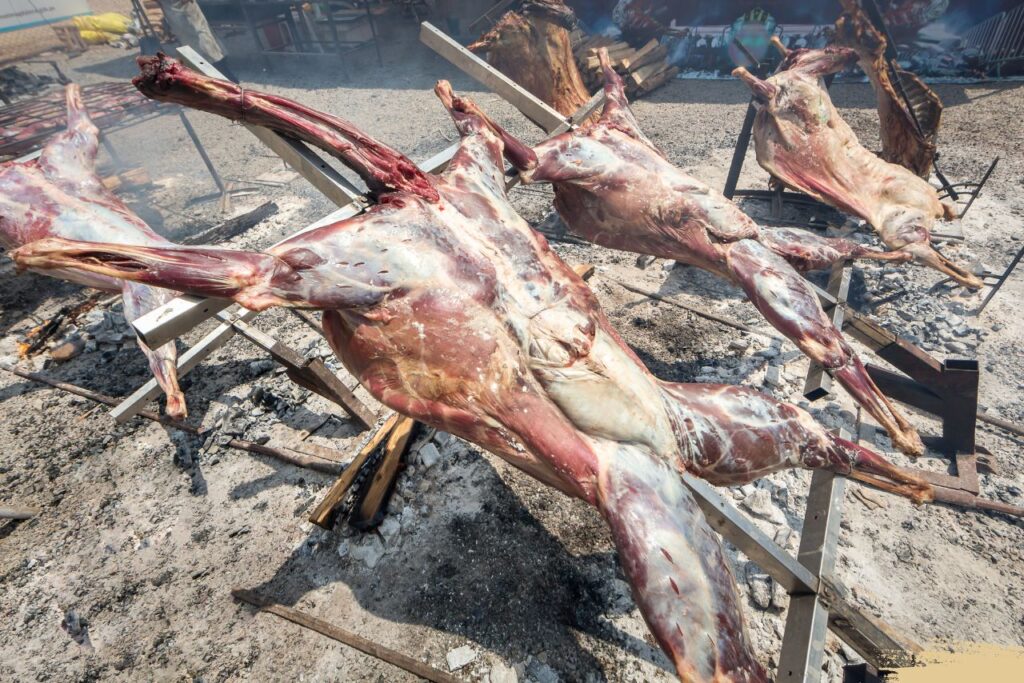
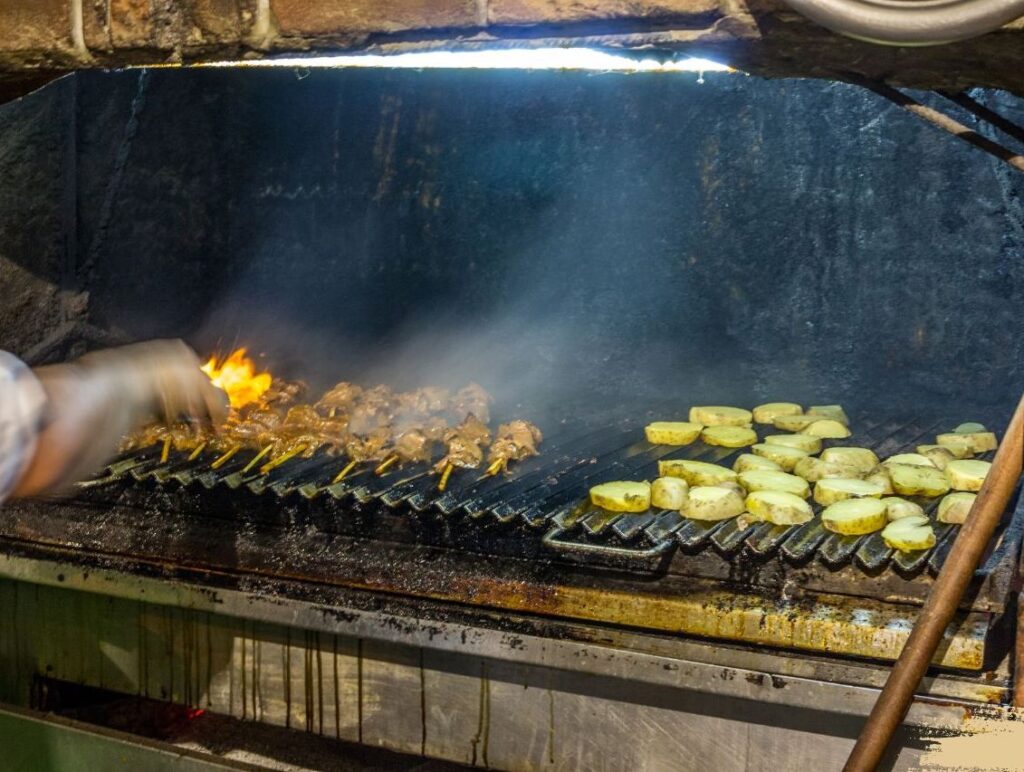
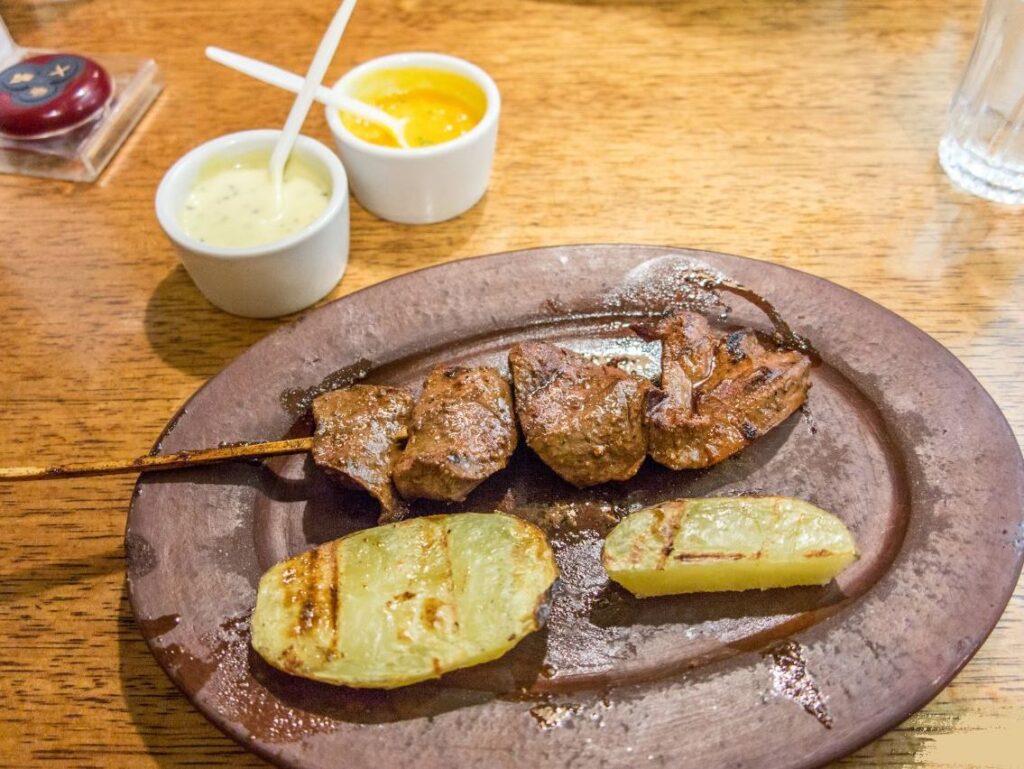
The festival features over 300 farmers from various regions, and visitors can indulge in a variety of regional dishes prepared by more than 50 restaurants and 70 food carts. Here, traditional Peruvian favourites like ceviche, anticuchos (grilled meat skewers), and cuy (roast guinea pig) take centre stage alongside the innovative fusion dishes that the country is so well known for.
The festival’s highlight is the Gran Mercado, where attendees can taste and purchase premium produce from thousands of Peruvian producers. The highlight for many is the extensive range of cacao, with Peru boasting 12 exclusive growing regions of this exclusive, alluring ingredient. Many are here to shop for the rare, esteemed Criollo variety, which is sourced from Peru’s northern Piura region and used by some of the world’s best chocolatiers.
It’s not only about chocolate here, of course, or ingredient shopping for that matter. Peru’s celebrity chefs and humble (and equally as skilled) street food vendors converge on the festival to demonstrate their skills and offer tasting samples. On top of all that, the event hosts numerous workshops and live cooking demonstrations, providing an immersive insight into the world of Peruvian gastronomy.
Where To Eat
While you’re in Lima, securing a table at Chef Virgilio Martinez’s Central (the 2023 winner of the World’s Best Restaurant) is a must. Other restaurants regularly featured in the upper echelons of such lists include Maido, led by the award-winning Japanese-Peruvian chef Mitsuharu and Mayta, arguably Lima’s current hottest ticket in town in a city full of them.
Where To Stay
For the epicurean adventurer, nothing but sustainable luxury will do. Lima is home to a wealth of luxury hotels by big name brands striving to do things in a more eco-friendly way. The Country Club Lima Hotel, Palacio del Inka (a Luxury Collection hotel) and Miraflores Park (a Belmond hotel) all featured in Condé Nast’s Best Hotels in South America list for 2023.
Read: 12 traditional Peruvian foods that you must try
Vendimia Festival in Mendoza, Argentina
Ideal for sipping Malbec in Argentina’s most renowned wine region…
From the staggering range of landscapes to the Maradona House Museum in Buenos Aires, there are countless good reasons to visit Argentina. Mendonza’s Vendimia Festival is most certainly one of them.
The country’s ‘second city’ to many, Mendoza is the wine-growing heart – the beating grape – of Argentina. This region is about the same distance from the equator as the grape-growing regions of California, France, and Italy, and produces wine of similar quality and acclaim as a result.
Mendonza’s wines range from award-winning Malbecs to vino patero, a proud Argentinian tradition that sees families and friends gather to crush grapes by foot, creating a rustic, young and sweet wine that embodies the spirit of community and heritage.
Familiar to steakhouse lovers the world over, Malbec is the signature wine of Mendoza and many vintages from the region are considered the world’s best. Known for its rich, fruit-forward flavours and juicy texture, common tasting notes of Mendoza Malbec include dark fruits such as blackberry, plum, and black cherry, and plenty of robust tannins.
Every February, Mendoza gears up for the harvest festivities known as Fiesta Nacional de la Vendimia (National Grape Harvest Festival), all of which culminates on the first Saturday of March. It’s celebrated all over Argentina, but Mendoza’s celebration is the largest. Everyone from garagistas (garage winemakers) to large wine estates join in on the fun.
A vibrant tribute to the region’s wine-making heritage, the people of Mendoza honour the humble grape harvest with parades, concerts and fireworks. They even choose a harvest queen.
On top of that, many wineries host special events to commemorate the occasion, including complimentary wine tastings on the city streets, allowing visitors to sample a variety of local products. Wine enthusiasts can also indulge in complimentary tastings at renowned vineyards like Catena Zapata. Don’t miss the red wine fountain, which simply has to be seen (and tasted) to be believed. You might not remember doing so, of course!
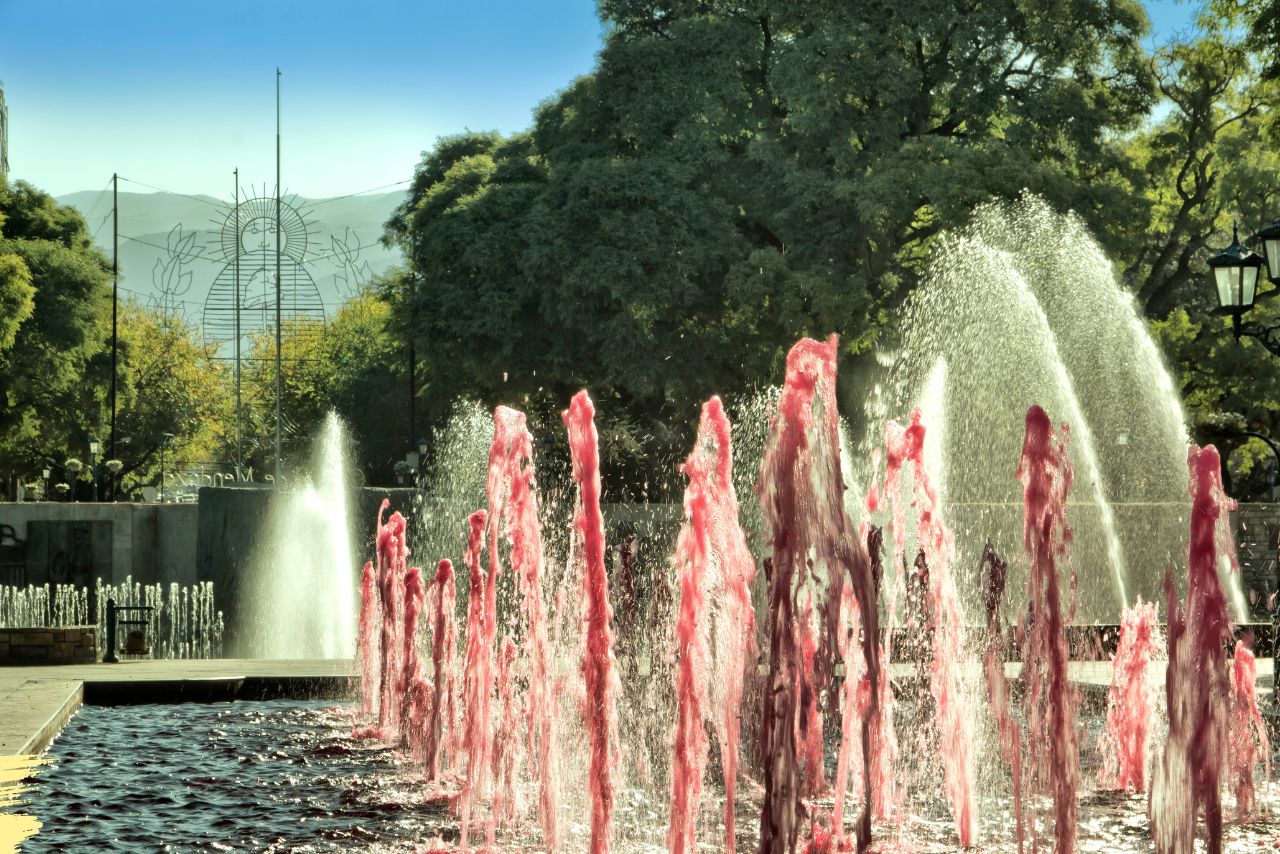
Where To Eat
While you’re in Mendoza, a must-visit is 1884 Restaurante. Housed inside a former winery and helmed by renowned chef Francis Mallmann (more on him in a moment), the restaurant offers a sophisticated menu of fire-based cooking highlighting local ingredients. This lavish place regularly makes those pesky lists we keep mentioning, and was featured in Argentina’s inaugural Michelin Guide, out at the tail end last year. With a 500-strong wine list, it’s our favourite place to dine and drink in Mendoza.
Azafrán, which means saffron in English, is another acclaimed Mendoza restaurant worth a visit. Chef Sebastián Weigandt is the main man here, bringing contemporary flair to classic Mendozan dishes. Since you’re in the area for the wine, you won’t be surprised that the wine list at Michelin-starred Azafrán is one of the best in the country. Salud!
Where To Stay
With its private vineyard setting and private villas, The Cavas Wine Lodge provides an excellent base to experience the festival. Each villa has a private terrace with an open fire, making it the ideal place to curl up with a bottle of Malbec and enjoy the stunning Andean scenery.
The Vines Resort & Spa is another good choice, billing itself as the ultimate retreat for food and wine lovers and outdoor adventurers. Oh, and the hotel’s restaurant, Siete Fuegos (Seven Fires), is helmed by none other than the mann, Francis Mallmann.
Festival Del Habano in Havana, Cuba
Ideal for those who believe all good meals end with a premium cigar…
In a recent article in the Guardian, a cigar shop owner in Mayfair told a reporter that 30% of his customers are under the age of 30. Indeed, it seems like the notion of a cigar-chomping old man in his dressing gown might be just a little bit outdated.
Like drinking, smoking is without doubt bad for you, but that doesn’t stop hundreds of cigar enthusiasts from around the globe heading to Cuba for its premier tobacco festival, the Festival Del Habano, which offers a deep dive into the world of premium cigars.
While technically not a culinary adventure, many cigar connoisseurs like to pair their smoke with food. For example, full-bodied cigars, such as Cubans and Hondurans, are thought to pair with smokey, barbecued foods, whereas mini cigars like Romeo y Julieta have a mellow smoke, so pair well with lighter dishes like pasta. This is the kind of stuff you can learn at Festival Del Habano in Havana.
Connoisseurs can attend factory tours and seminars, and take part in a contest for the longest unbroken ash, making their way through the festival trying not to drop their stack. The event culminates in a much-anticipated and gloriously lavish gala dinner which ends with a rare cigar auction. Once upon a time, Fidel Castro himself was a guest of honour at the gala dinner. He gave speeches every year and then signed humidors and cigars for the auction. What we would have given to share a stogie with El Comandante.
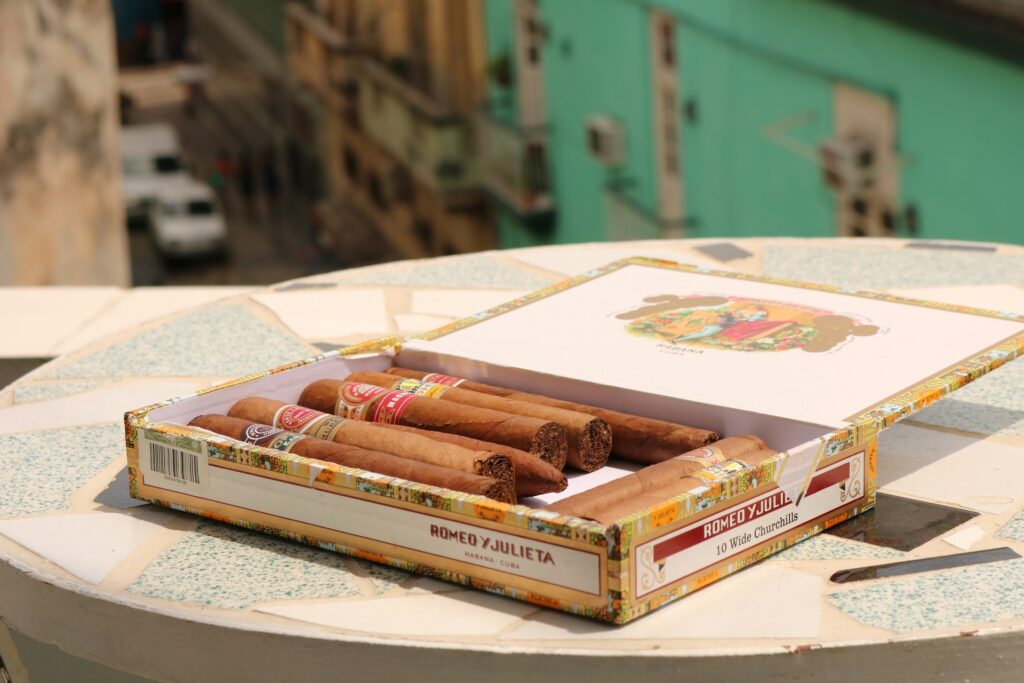

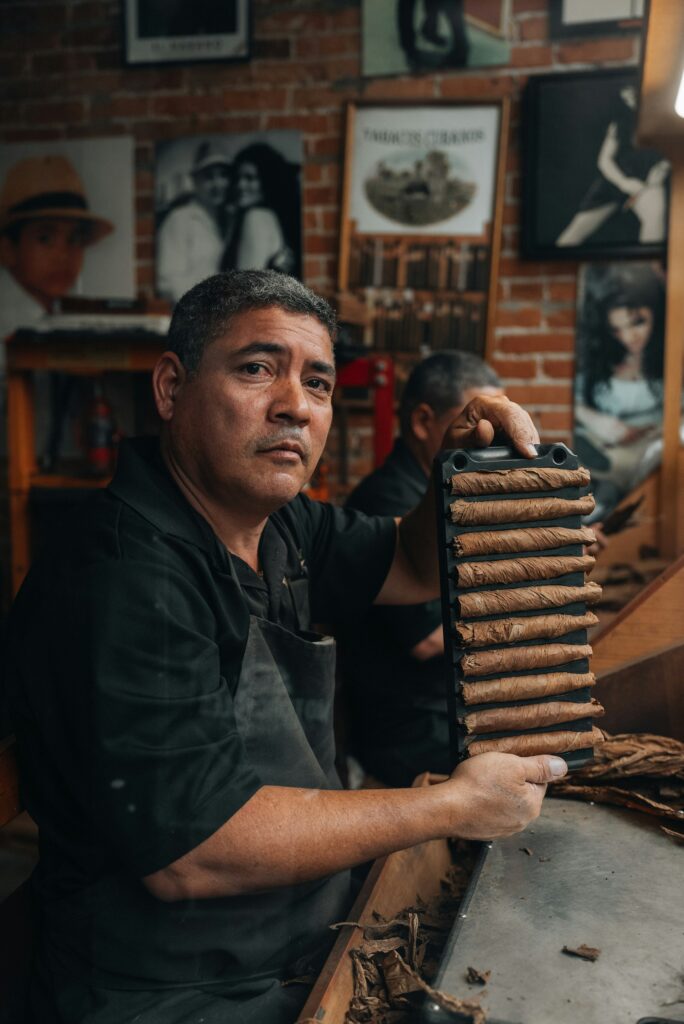
Where To Eat
La Guarida (The Den) has been a Havanese fixture for over 84 years. It’s famed for both its culinary offerings and cinematic history. It doesn’t look like much from the outside and as you ascend the grand old crumbling staircase, you may not be filled with confidence. But this typically run-down Cuban charm is all part of the experience. As soon as you step into the grand restaurant, those feelings of doubt fall by the wayside – it’s a chic affair crowned by an incredible serving of suckling pig, a Cuban speciality.
Where To Stay
If it’s a five-star hotel you’re after, the Gran Hotel Manzana Kempinski offers a first-class, luxury experience in the heart of Old Havana. Iberostar Grand Packard is another luxurious hotel with stunning views of the Havana skyline and the sea.
However, if you’re looking for a uniquely Cuban experience, stay at a casa particular (private guesthouses) some of which are equal to the best boutique hotels in the world in vibes. Paseo 206, La Reservais and Portería are all firm favourites of ours.
Fire Cooking with Chef Francis Mallmann in Patagonia, Argentina
Ideal for a culinary adventurer of open-fire cooking with a celebrity chef…
To call Chef Francis Mallmann a celebrity chef does him a disservice. He is Argentina’s most famous cook and undeniably one of the most prominent chefs in the whole of Latin America. Celebrated for his live-fire cooking techniques, which he’s termed ‘the 7 fires’, Mallmann’s approach utilises open flames, embers, and sometimes even hot ashes to prepare dishes that manage to be both rustic and refined.
Today he lives on a remote island in Patagonia, and you can join him to have an elemental encounter with food and nature on his private island, La Isla. Here guests can become properly immersed in his culinary journey, featuring daily open-fire cooking lessons over custom-made fire pits, all led personally by Mallmann. To get a taste of what’s in store, watch the Chef’s Table episode on Netflix devoted to the man, the myth, the legend himself. Yours for £25’000 a person.
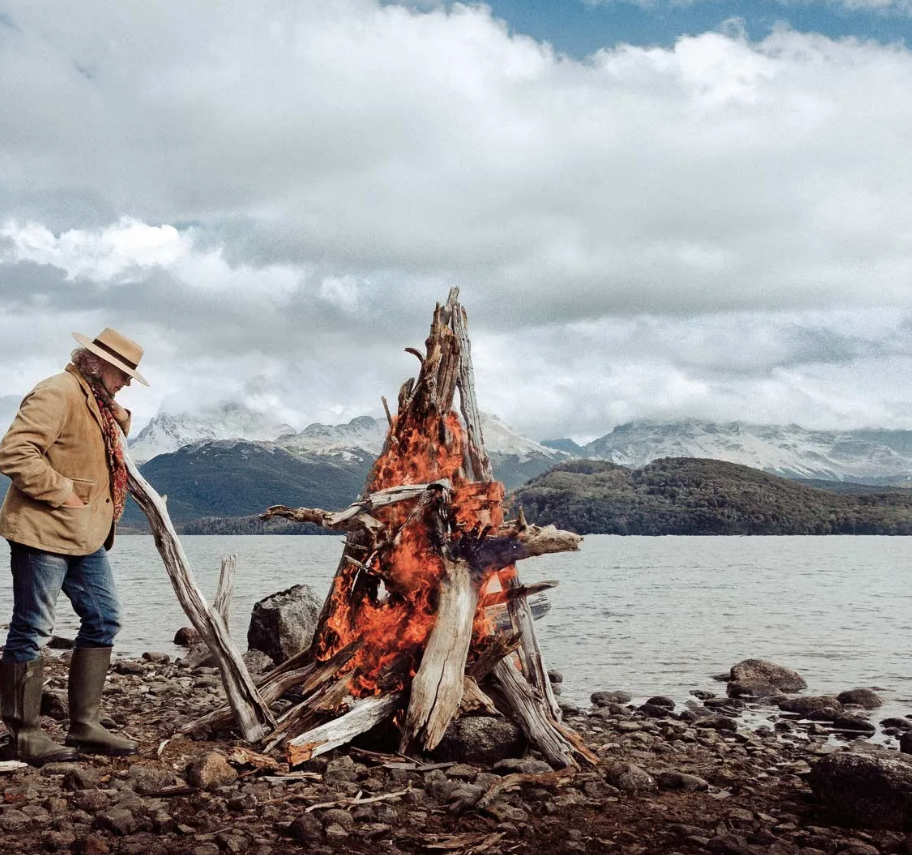
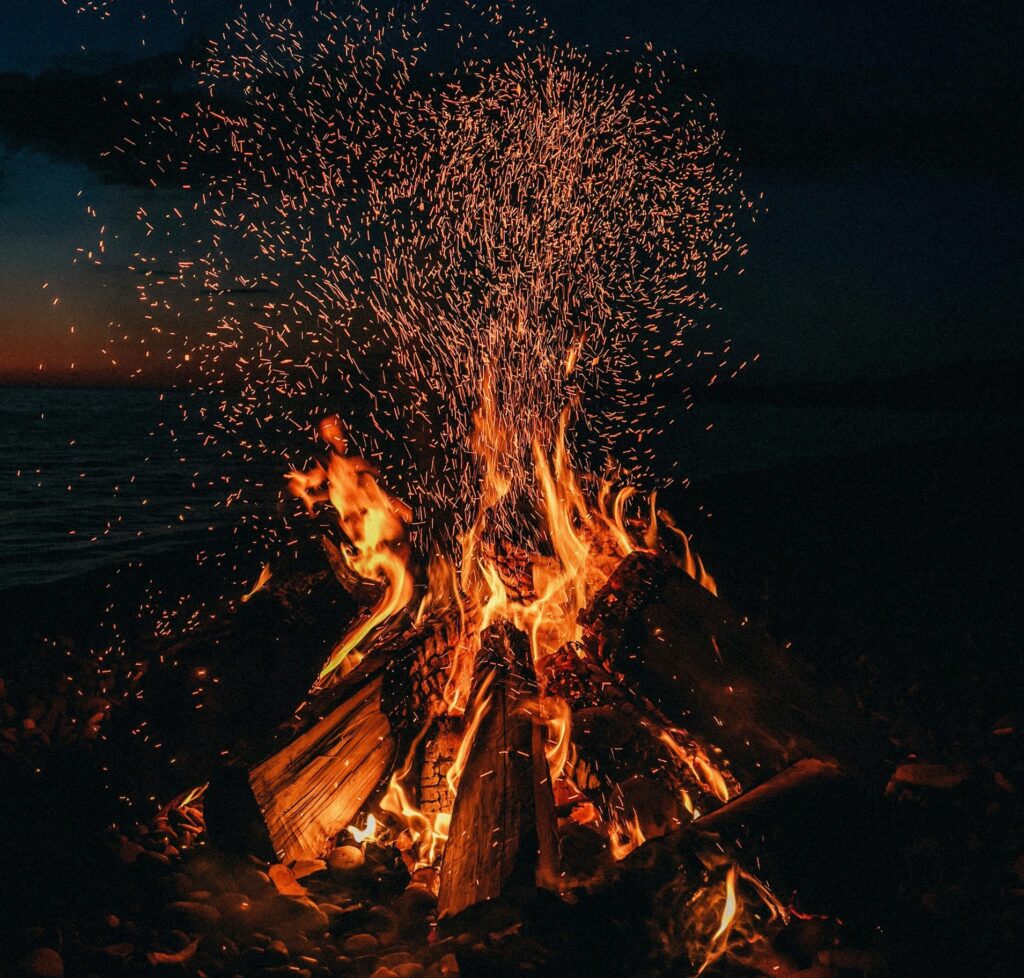
Where To Eat
You’ll likely arrive in Buenos Aires for this trip. A must-visit is Don Julio, arguably the world’s most revered steakhouse. Booking in advance is essential.
Where To Stay
Guests can cosy up in Mallman’s treasured cabin while on the island. Luxury travel companies like Plan South America, which offer tailor-made journeys to Latin America, can assist you with securing a spot on this exclusive retreat.
Belize Lobster Festival, Belize
Ideal for seafood lovers and festival-goers…
Come summer, seafood season in Belize, the country’s long coastline and adjacent cerulean waters teem with crustaceans. Spiny lobsters, also known as rock lobsters, are particularly abundant in this part of the world, and str prized for their sweet and succulent meat.
Lobster season in Belize opens on June 15th and closes on February 15th, and during this time there are many, many lobster festivals in the country, including Belize City’s Lobsterfest, the Caye Caulker Lobsterfest, Placencia Lobsterfest and our favourite, the San Pedro Lobsterfest. The latter, out of all the lobster festivals in Belize, is the biggest and most lively.
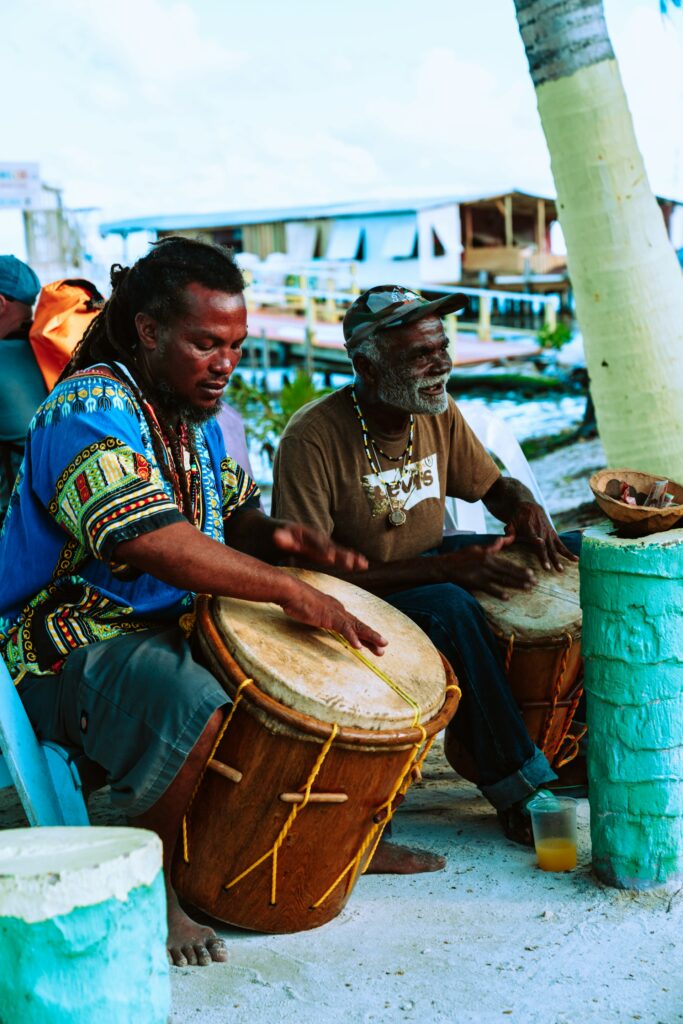
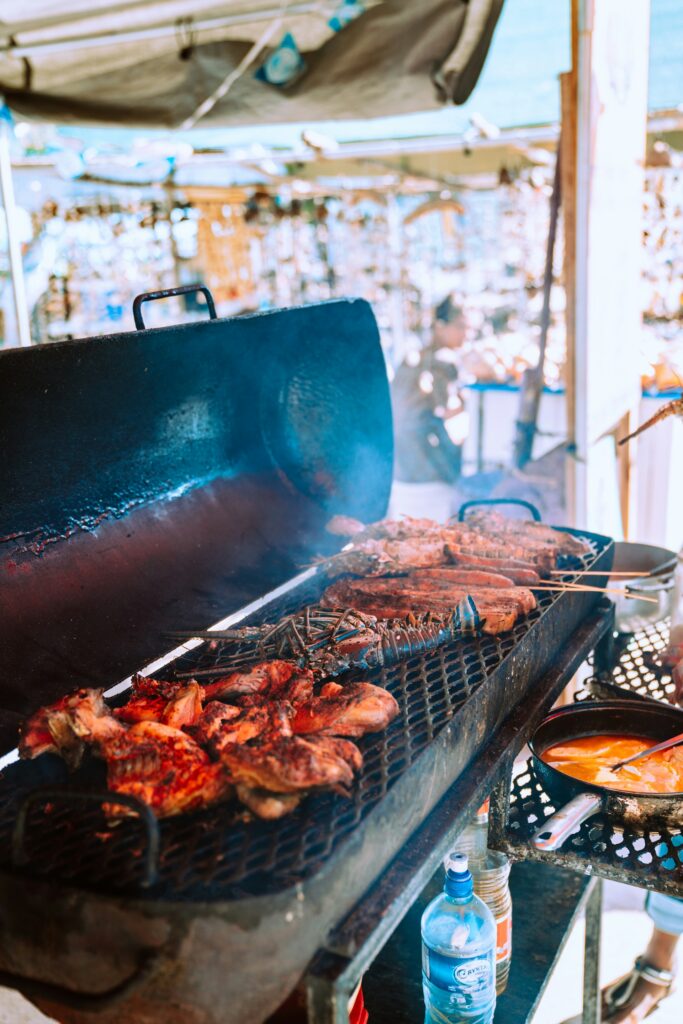
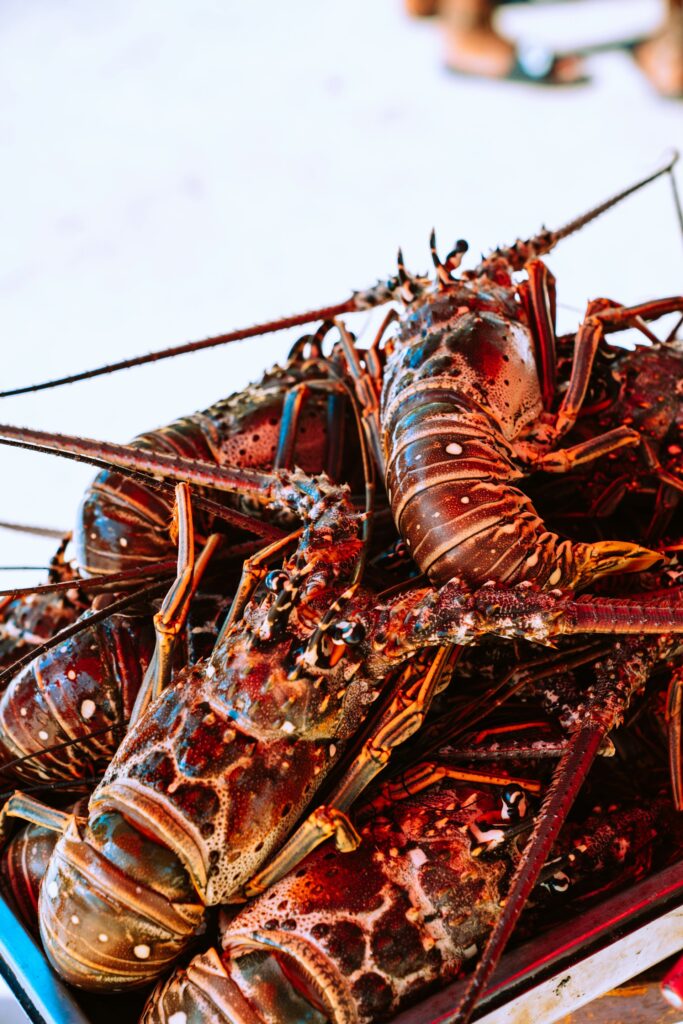
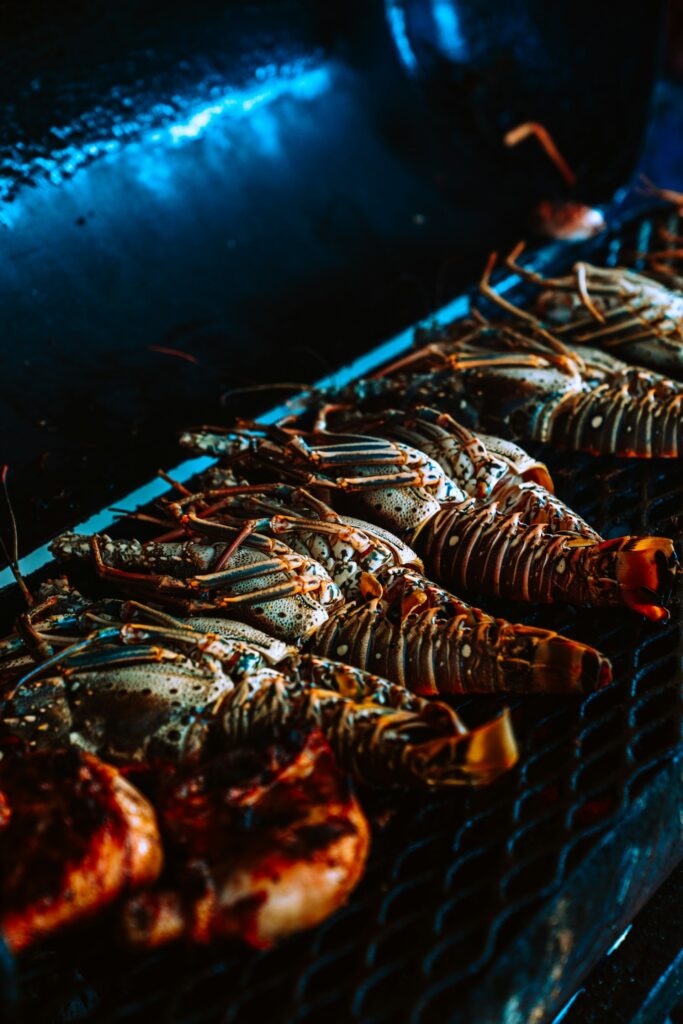
San Pedro Lobstefest is held in July (usually in the second week) in the charming coastal town of San Pedro on the island of Ambergris Caye. This very Belizean festival is a hedonistic celebration of the crustacean – some even call it a festival of gastronomic debauchery.
At the festival, lobster is served in many different ways – creole style, lobster thermidor, lobster ceviche, barbecued, frittered and on kebabs, in burritos and even as a pizza topping. Whichever way you take it, don’t miss the popular lobster crawl, where restaurants serve up lobster creations as a part of their menus. There are also fun and frivolous beauty pageants where some contestants dress as lobsters to a soundtrack of blasting reggae, all of which folds into night beach parties where local Belikin beers over ice go around until dawn. Heaven.
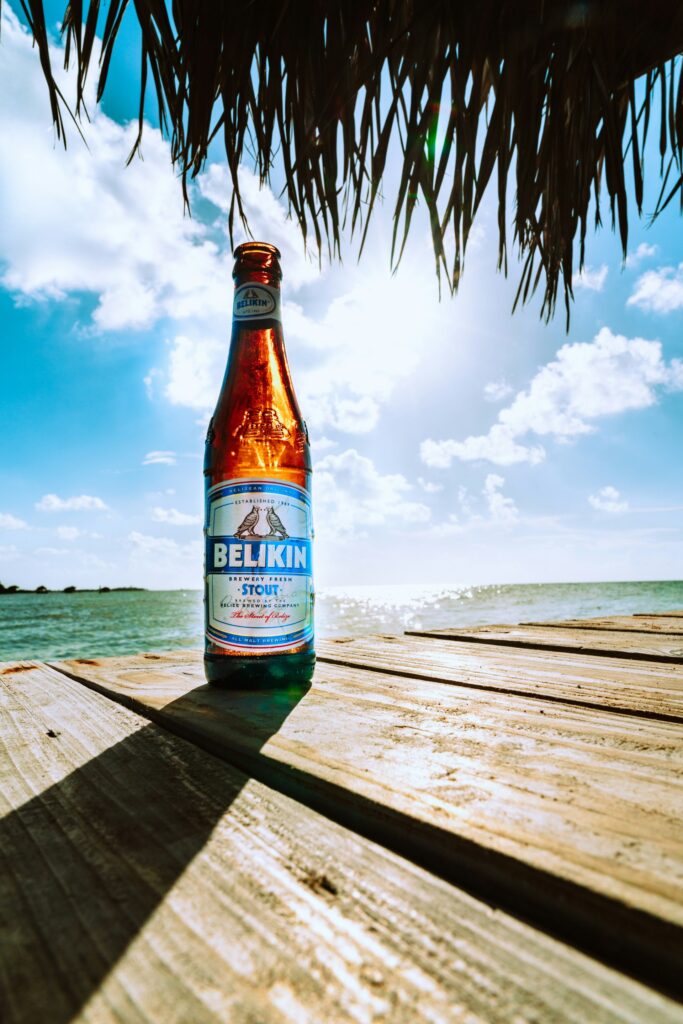

All that said, these lobster festivals aren’t just about fun and frivolity. They also highlight the sustainable lobster-catching techniques used – and encouraged – in Belize. While the lobster festivals have grown in demand, there are strict rules in place about the size of the catch. They also have a very strict, closed lobster season. Restaurants play their part in refusing soft-shelled and undersized lobsters. A delicious feast with a side of sustainability? Count us in!
Where To Eat
Elvi’s Kitchen, where Belize’s celebrity chef Jennie Staines pays homage to her mother Elvia’s Maya and Mestizo family recipes, is a must-visit. We know you’re here for lobster but her famous crab claws are a must-order too.
If you’re still hungry, the Palmilla Restaurant, located within the Victoria House Resort, offers gourmet dining with a focus on local seafood, while the Hidden Treasure restaurant is known for its romantic ambiance and seafood dishes.
Where To Stay
5 miles north of San Pedro and reachable only by motorboat, Matachica Resort & Spa is the place to stay. If you haven’t had your fill of lobster, then Matachica’s restaurant, Mambo, is overseen by a trio of French Laundry alumni. The handmade lobster ravioli is particularly good.
Fiesta Del Yamor in Otavalo, Ecuador
Ideal for celebrating amazing maize in all its glory…
Corn has always held deep spiritual and cultural significance for the people of Latin America; both the Incas and the Mayans hailed it as a gift from the gods, symbolising fertility, abundance, and sustenance.
Today it is still widely celebrated across the world. Every year, the Fiesta Del Yamor in Otavalo, Ecuador, (an Indigenous harvest festival), honours the maize harvest. This 10-day celebration, starting at the business end of August and running into September, gives thanks at the second solstice, the season of the harvest. The celebrations date back to Incan rites of yamor, occurring the two weeks before the solstice.
The festival features a traditional drink called chicha del yamor, made from seven varieties of maize. As part of the offering to the sun god, the very best corn is chosen to be ground and mixed with water until it fermented to create a potent liquor called chicha. This drink lubricates proceedings, which include naked lake swimming, music, dancing and more.


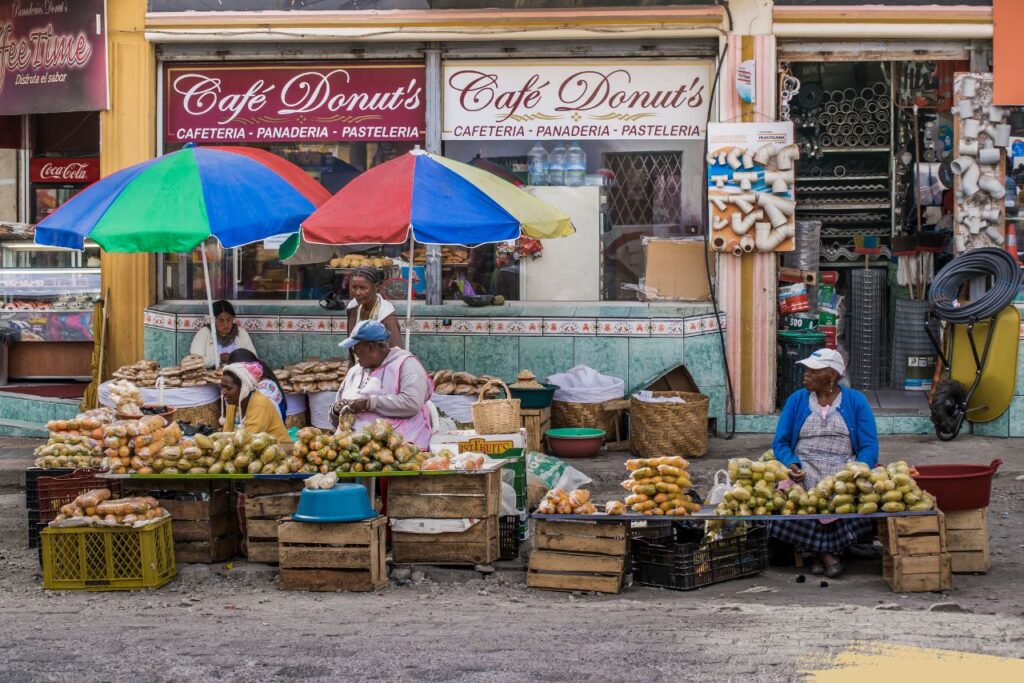
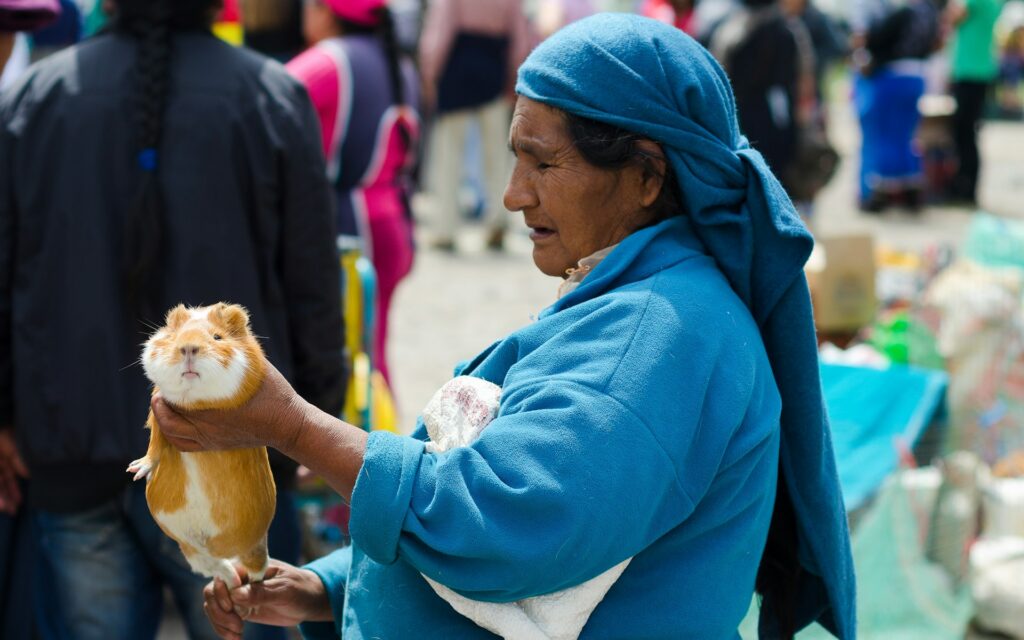


Where To Eat
If you’ve had too much of that chicha del yamor to drink the night before, then tackle your chuchaqui (hangover) with an encebollado, a savoury fish soup with a murky yet oh-so delicious broth.
Believed to help hangovers, this dish is served in the morning. Eat it at La Cosecha Coffee & Bakery. This restaurant is well-regarded for its hearty breakfasts and comforting dishes. Another great option is Mi Otavalito, which serves traditional Ecuadorian cuisine.
Where To Stay
Otavalo is home to the largest market in South America. During the Fiesta del Yamor, the Otavalo market, which is famous for its vibrant textiles and crafts, remains open.
The market is often more lively and bustling during the festival, as it attracts many visitors and tourists, a time when vendors take advantage of the increased foot traffic to showcase their goods. Stay near the action (but removed enough for a little peace, too) at Hacienda Cusin, a beautifully restored 17th-century estate offering luxurious accommodations, gardens, and a unique historical experience.
Further away, the nearest big city is Quito. The capital of Ecuador and a UNESCO World Heritage site, it’s around a two hour drive from Otavalo, and also has plenty more accommodation options.
Flower & Coffee Festival in Boquete, Panama
Ideal for coffee lovers and nature enthusiasts…
Panama has long had a reputation as one of the world’s best coffee producers. Geisha, the rarest, most sought-after and most expensive coffee bean even comes from here.
Coffee connoisseurs will know that its intensely floral Esmeralda Special from Hacienda La Esmeralda, located in the Boquete region of Panama, has time and time again been voted billed as “the world’s best coffee”, and has set auction records.
Boquete town, in the vibrantly colourful wooded valley of the same name, is surrounded by the mountains of Chiriquí. The nutrient-rich volcanic soil, cool climate and salty sea breeze in this northwestern part of Panamá make it ideal for growing coffee.
Every year in January, Boquete holds its annual Flower & Coffee Festival. Visitors can tour coffee plantations, participate in tastings, and revel in the colourful displays of flora that the valley is famous for. Be sure to tour Finca La Valentina, the Don Pachi Estate, and the Hacienda La Esmeralda. You can even tour the region’s so-called coffee circuit, made up of 15 farms in Boquete, Volcan, and the greater Chiriqui region.
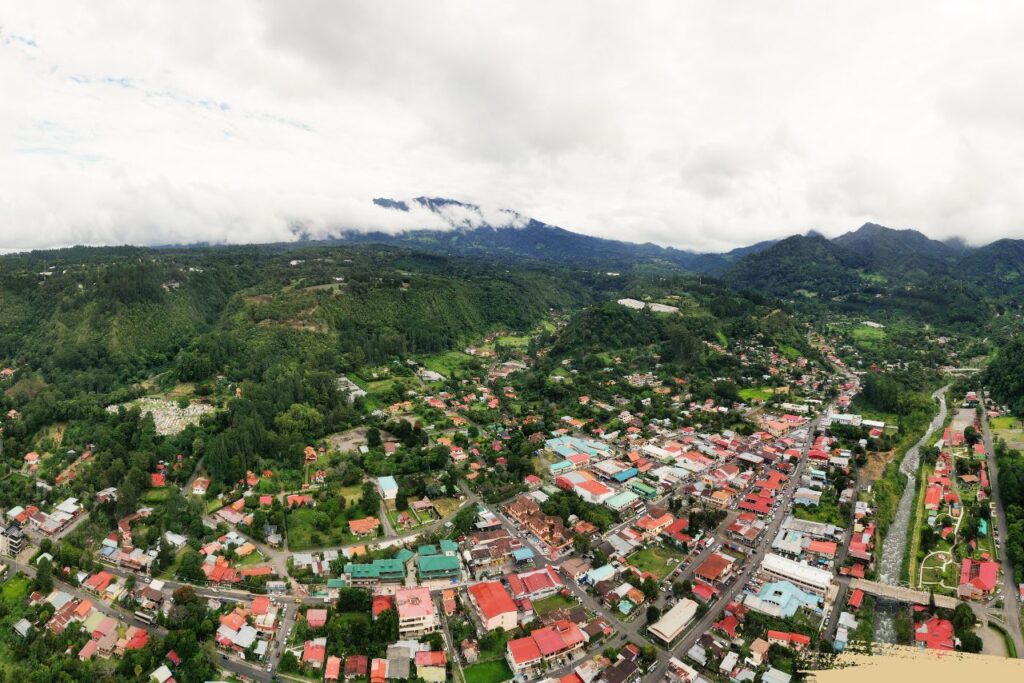
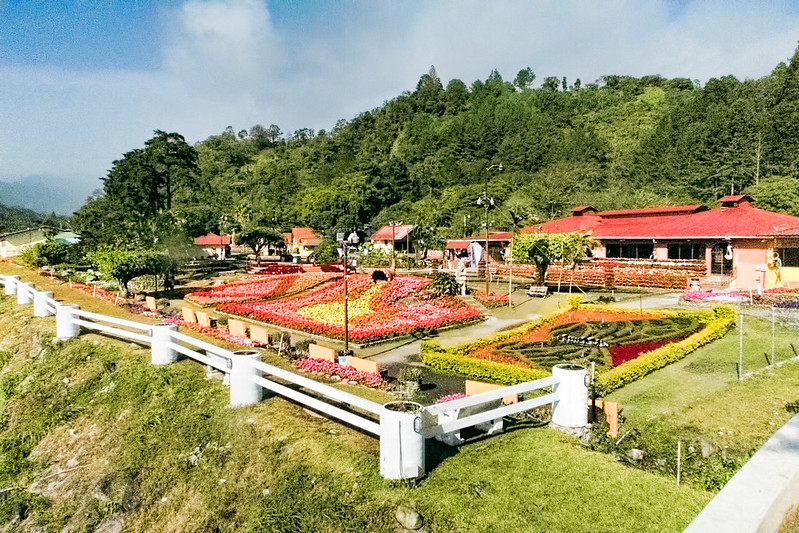
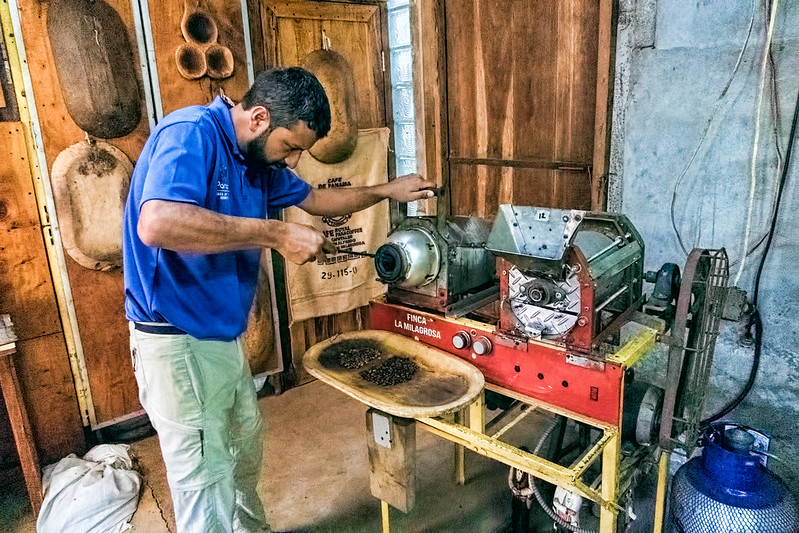
Where To Eat
Visit Restaurante T’ach at the Panamonte Inn and Spa to experience the exquisite culinary creations of Panama’s leading culinary anthropologist, Charlie Collins.
Previous winner of The Best in the World Culinary Heritage award at the 2018 Gourmand World Cookbook Awards, he masterfully blends traditional Panamanian flavours with innovative techniques. This unique dining experience not only offers delicious food but also provides a deep cultural insight into Panama’s rich gastronomic heritage.
Where To Stay
Boquete is only 40 minutes from David, Panama’s third largest city. It’s also an hour’s drive from The Gulf of Chiriquí. You can easily stay at either place and get a driver to take you to the Flower & Coffee Festival.
If you want to stay in Boquete, then for a luxurious stay, the Panamonte Inn and Spa offers beautiful antique-style guest rooms. It’s a great base for exploring the highlands and coffee estates. You can even get cooking lessons with aforementioned, award winning Chef Charlie Collins.
The Bottom Line
For those seeking to combine a love of travel with a passion for food, Latin America stands out as a destination that is both deeply rooted in tradition and at the forefront of culinary innovation. What more could you want than that?





